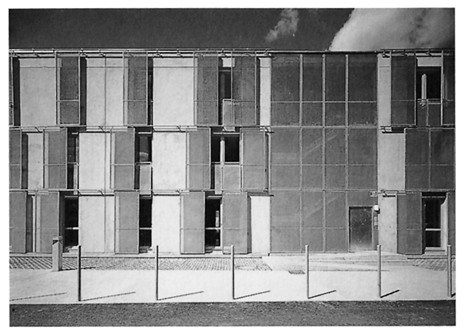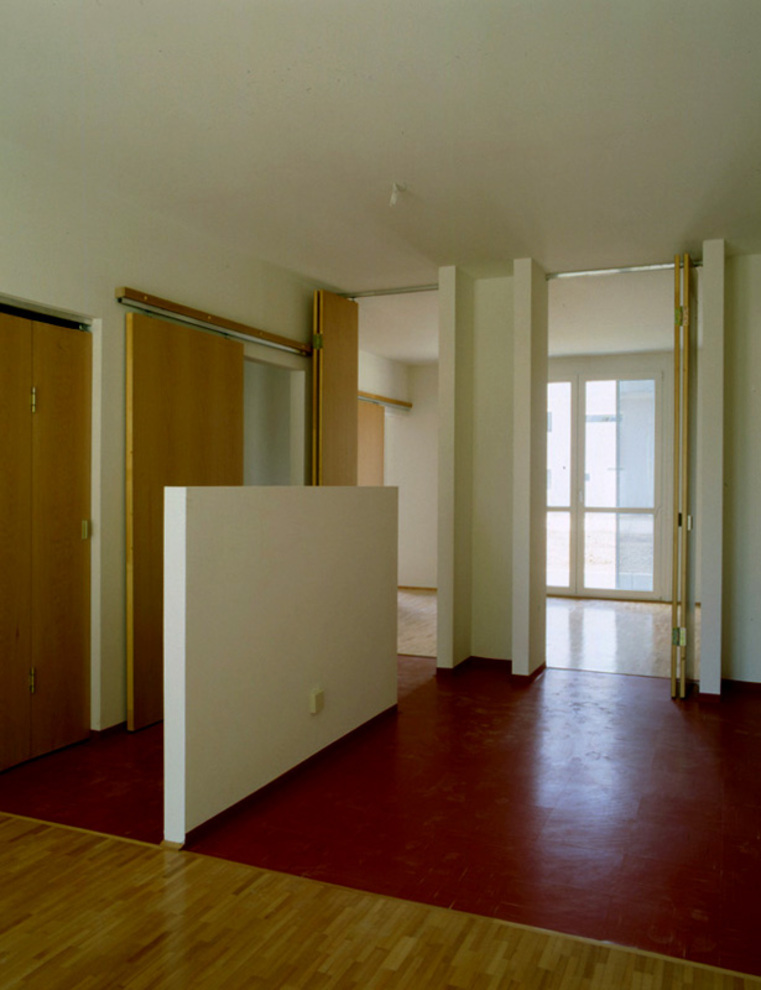Description
A concrete bar of precise and uncompromising structure which offers great flexibility within its rules. The extruded-looking building is not subordinate to its haphazard surroundings. Rather, it sits autonomously in the landscape. The smooth facade is unfettered by loggias or balconies. It comes alive instead through the animated image of floor-high sliding shutters. On the east elevation, these shutters are made of expanded metal and provide visual protection; on the west side, they are made of metal frames with nylon fabric and filter sunlight. They conceal French windows. Opening to 180°, these windows transform the living room into a loggia.
Basically, there exists only one, albeit extremely flexible, apartment type in the building – in smaller and larger versions: the rooms offer a functional openness thanks to their size, shape, and individual entrance area. The plan can be read in two ways with the spaces ordered lengthwise or transversely into three zones (4½-room apt.). Lengthwise: living rooms and bedrooms along the two outer sides, the service core (hall, kitchen, bathroom) in the middle. Transverse: first axis, a half-bedroom (7.5 m²) and guest WC; second axis, living room and kitchen; third axis, two bedrooms and bathroom. The spaces are connected lengthwise by wide sliding doors and transversely by folding doors. The spaces can thus be linked with complete flexibility. There is one additional variation: occupants can request that the kitchen be located in the small room on the west side.
Drawings
Floor plan diagram, scale 1:500
Site plan
Typical floor plan, scale 1:200
Type A: 2½-room apartment, with kitchen in the small room or in the center Type B: 4½-room apartment, with kitchen in the center or in the small room, scale 1:200
Cross Section
Photos

Exterior view

Interior view
Originally published in: Oliver Heckmann, Friederike Schneider (eds.), Floor Plan Manual Housing, fourth revised and expanded edition, Birkhäuser, 2011.